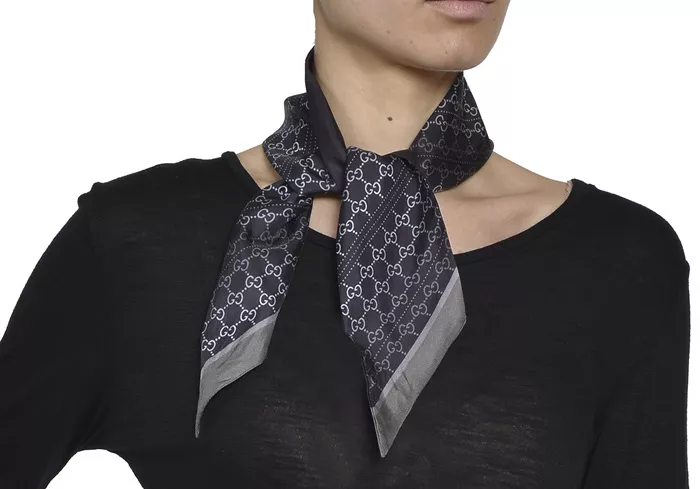When it comes to luxury accessories that have truly stood the test of time, few can rival the Gucci silk scarf. Since the 1950s, these brightly colored square scarves have gone from simple neck pieces to coveted fashion statements by collectors.
It all began in 1958, when Gucci collaborated with silk masters in Como, Italy, to create its first silk design, the Tolda di Nave—a nautical-themed masterpiece that set the tone for decades of innovation. But the real turning point came in 1966, when the now-iconic Flora scarf was designed by Vittorio Aconero de Testa for Princess Grace of Monaco.
Famously, Aconero completed the intricate work in just one week, and would go on to define Gucci’s silk era, creating nearly 80 exquisite designs between 1960 and 1981. His imaginative, detailed illustrations elevated the scarf from a mere accessory to a wearable work of art, capturing the spirit of the times while reinforcing Gucci’s brand identity of craftsmanship and creativity.
Throughout Gucci’s classics, five themes recur: romantic florals, rich animal prints, nautical references, equestrian references that pay homage to the House’s heritage, and the iconic GG monogram.
These designs were not limited to accessories; by 1969, they had extended to shirts and dresses, demonstrating the House’s ability to continually reinvent its signature elements. The floral motif alone requires 37 separate printing processes, each in a different color – a testament to the craftsmanship that goes into making Gucci silk pieces a heirloom quality.
Gucci today reaffirmed its commitment to silk scarves at the heart of the brand with the ambitious 90×90 project. Gucci invited nine contemporary artists from around the world to reinterpret nine iconic silk themes, each bringing a unique craft and vision to the collaboration.
Conceptual art pioneer Robert Barry explores the power of language and minimalism; Milanese illustrator Gio Pastori brings a bold graphic feel through his intricate paper-cutting techniques; Shanghai-based digital artist Currynew fuses pop culture with surrealist imagination; while Everett Glenn injects narrative depth through his comic-inspired characters and vibrant storylines; meanwhile, Yu Cai’s work captures the vibrancy of urban landscapes with crisp contemporary compositions; and Jonny Niesche transforms everyday inspirations – such as the sheen of cosmetics counters and the glitter of car paint – into mesmerizing, colorful atmospheres.
Known for her vivid colors and emotional storytelling, Inji Seo blends her design background with a narrative style that has attracted global brands and K-pop icons.
Through these collaborations, Gucci is not only ensuring that its silk heritage is passed on, but also actively reinventing it. The project illustrates how true craftsmanship continues to adapt and evolve, honoring the House’s heritage while exploring new ways to make silk scarves resonate with today’s audiences.
This is a clear statement of Gucci’s intention: Gucci’s silk heritage is not a relic of the past, but a living symbol of artistry, creativity and cultural significance – one that will continue to shape the future in as vivid a way as it has defined the past.

